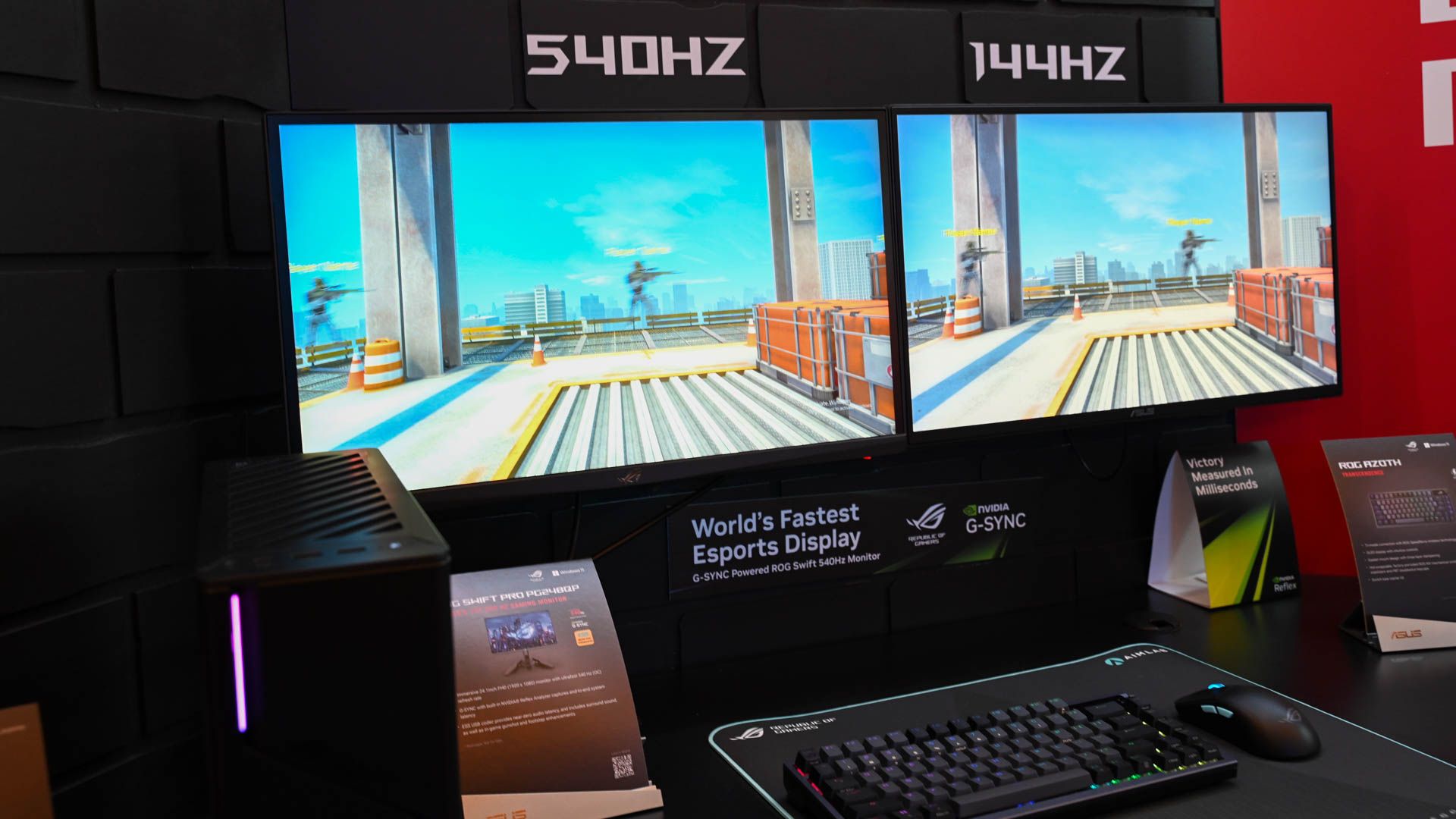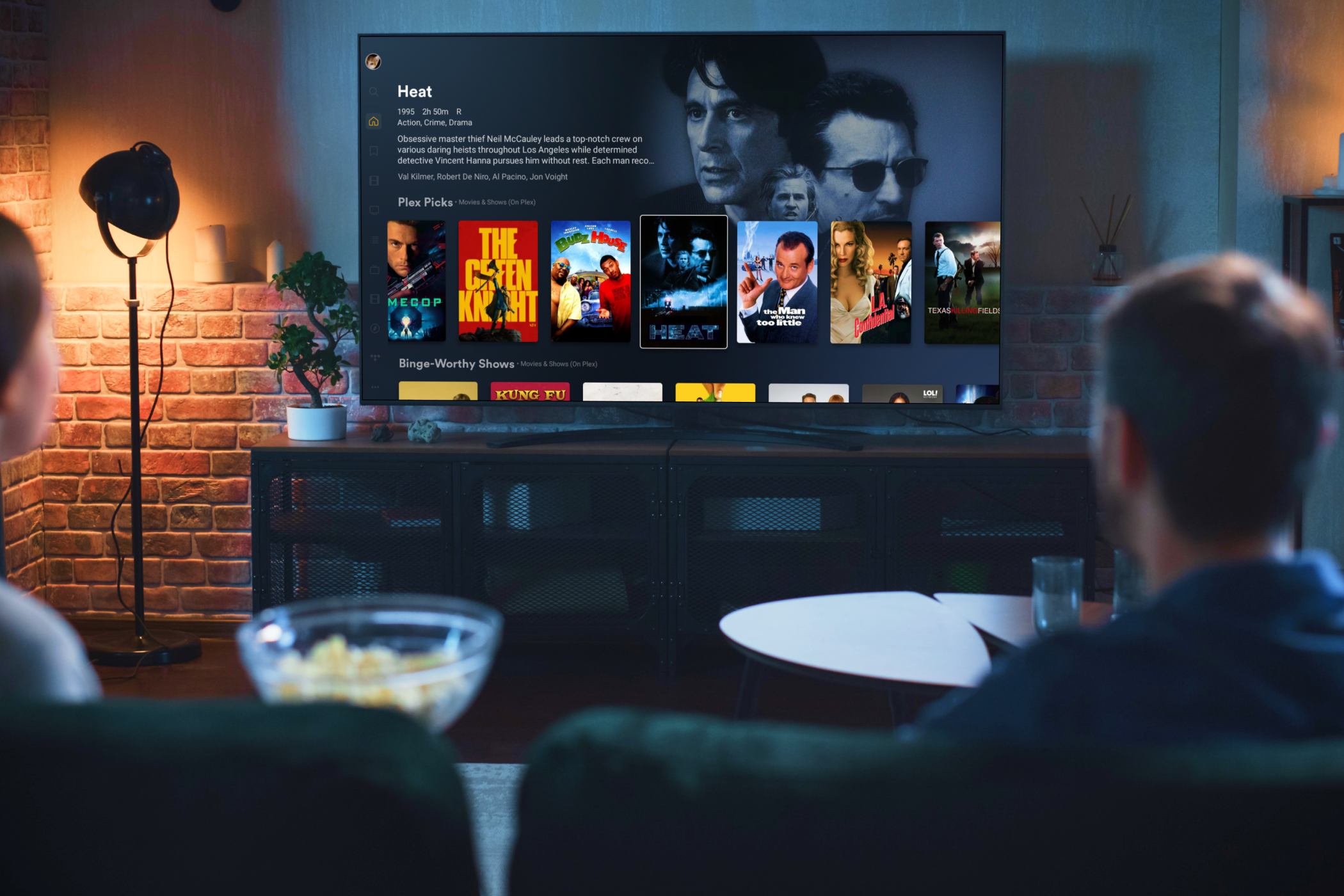
Key Takeaways
- Refresh rate and input lag are crucial for a smooth gaming experience. Monitors tend to do better in this regard, especially in the budget segment.
- TVs have larger screens and additional features that enhance movie-watching but may lack gaming-oriented features.
- Gaming TVs provide a gaming experience comparable to monitors, but they also come with a higher price tag.
If you’re in the market for a new screen for your gaming console, your first concern will be whether to pick a TV or monitor. What provides a better gaming experience: a fancy gaming monitor or a stunning 4K TV?
Refresh Rate, Response Time, and Input Lag: Monitors Win by a Long Shot
While they don’t affect picture quality directly, these four specs are undoubtedly the most important for a smooth gaming experience. Let’s go over the glossary first:
- Refresh rate, measured in hertz (Hz), is how many times the display updates its image per second. A higher number is better. Newer gaming consoles support 120Hz on select games.
- Variable Refresh Rate (VRR) via HDMI 2.1 on consoles is similar to technologies like NVIDIA G-Sync and AMD FreeSync on PCs. VRR allows the display to adjust its refresh rate automatically to match the frames per second (FPS). This minimizes distracting screen tearing that can make your games look “glitchy.”
- Low Framerate Compensation (LFC) doubles the number of frames when the FPS drops below the display’s variable refresh rate window. It works in combination with VRR to ensure the display stays within the supported VRR range, resulting in smoother visuals.
- Pixel response time, measured in milliseconds (ms), tells us how long it takes for the pixels on your display to change their color. A lower response time means motions are smoother and clear. Higher response times can result in nasty visual artifacts called “ghosting.”
- Input lag (or input latency) is also measured in milliseconds and tells us the time between the input from your controller and the corresponding action to occur on the screen. In addition to the screen, your controller, console, cable, and other parts of the signal chain affect input lag. High input lag makes many games unplayable, as your actions won’t be registered on time.
Xbox Series X/S supports AMD FreeSync in addition to HDMI 2.1 VRR. The PlayStation 5 only supports HDMI 2.1 VRR. Neither console supports G-Sync.
A higher refresh rate is one of those things that will be immediately obvious, even to a layperson. A 120Hz display can show twice the number of images per second than a 60Hz one, making everything look much smoother. The difference is especially noticeable in fast-paced games such as first-person shooters and racing games. High-refresh-rate monitors have been around for a while now—you’ll be hard-pressed to find a gaming monitor that isn’t 144Hz or more. While 120Hz TVs are garnering popularity, they’re significantly more expensive than monitors or regular 60Hz TVs.
TVs that support VRR are still relatively uncommon, but monitors that support VRR via HDMI 2.1 are even rarer. Xbox Series S/X can also work with FreeSync, provided the display device also supports FreeSync via HDMI. You’ll need to double-check the specifications sheet and user manual to ensure that VRR is supported via HDMI. Otherwise, it won’t work.
Response time and input lag are the specs you might not even glance at until it’s too late. Pretty much any modern gaming monitor will do a solid job in this regard. Monitors are primarily designed for computers, and manufacturers prioritize responsiveness. High refresh rate (144Hz+) monitors have unnoticeable latency, with response times in the 1–7ms range. For reference, we recommend a total latency of under 30ms for smooth gaming, but you really want to stay at <5ms to have an edge in online games.
If all other factors are equal, a display running at a higher refresh rate will have a lower input lag.
Most cheaper TVs have atrocious input lag of over 80ms at 60Hz when not in game mode, a stark contrast to the input lag of 8–20ms at 60Hz on monitors. Gaming takes a back seat on TVs, as they have a post-processing tech that ensures your TV shows and movies look amazing. The only saving grace is the “game mode” that many TVs now have, which disables post-processing and significantly lowers latency. However, it can also make the image look significantly worse. Your experience may vary depending on the model.
Price and Features: TVs Are More Expensive and Have Fewer Options
TVs are significantly larger and have awesome creature comforts and features that enhance the movie-watching experience. Smart TV tech and the 4K resolution have been widely adopted in the industry. Some TVs even come equipped with great speakers that support Dolby Atmos, although audiophiles still prefer a soundbar or custom audio solution. Monitors don’t have any of these features, save for (usually) horrible built-in speakers.
Conversely, you can find gaming-oriented features like high refresh rate, some form of VRR, and fast response times on all gaming monitors. Thanks to these widespread adoptions, the respective technologies have trickled down to budget models; you can find amazing monitors for around $200–$500.
Gaming TVs are few and far between, plus they’re larger and have TV-oriented features. You’ll have to pay a premium to get a TV with a high refresh rate, VRR, 4K, smart TV capabilities, and a large screen all in one package. And since there aren’t many models to choose from, your options will be limited, meaning you may have to sacrifice one or two features to stay within your budget. A high refresh rate TV with VRR will set you back around $350–$2,000.
Size and Convenience: TVs Demand Space
While there aren’t any strict definitions, monitors usually fall in the 24–32-inch range. The smallest TVs start at around 32 inches, but you’ll rarely find any proper gaming features at that size. Gaming-oriented TVs are generally in the 40– to 85-inch range. If you’ve ever seen an 85-inch TV, you know how huge those displays are—they have a diagonal length of 7 feet (2.1m)!
Realistically, you’ll have to wall-mount a TV to minimize how much space it takes. Still, it’ll take up valuable real estate if you live in a smaller apartment or dorm, while a monitor could easily be placed on a small table or mounted on a monitor arm.
Versatility: A TV Is for More Than Just Gaming
While you can realistically watch movies and TV shows on a monitor, it’s not going to be the same as on an enormous TV screen. TV manufacturers include all kinds of image processing features to deliver the big screen spectacle to your living room. High contrast ratios make colors pop, and bright explosions on a large HDR screen are breathtaking. Also, most movies are shot at 24 or 30 FPS, so a higher refresh rate won’t really matter.
Thanks to their size, TVs can easily be viewed by multiple people, whereas a monitor is only large enough for one or maybe two people to view from a close distance. Even if you watch movies alone, you’ll still have a better time with a large screen. You can lay back on your couch and won’t have to strain your eyes to see what’s going on. Also, if you like to play local co-op games, you’re better off with a TV purely because the screen is so much larger.
Get a Gaming TV for the Best of Both Worlds
The key to ensuring a competitive edge and an enjoyable gaming experience with a TV is to pick the right model. There are some seriously impressive models that’ll make both your movie nights and gaming sessions unforgettable. You’ll get a large screen, high resolution, great colors, and fast response times and refresh rates. If you’re interested, we have curated a list of the best gaming TVs to guide you toward a TV that impresses rather than disappoints.
When you include value for money into the equation, monitors undoubtedly provide a better gaming experience. A budget gaming monitor can provide you with a high refresh rate, decent picture quality, and no visual artifacts. TVs are versatile and can provide a decent gaming experience, but fast-paced games won’t look very smooth due to the potentially slow response time and low refresh rate. You can get the best experience on a true gaming TV, albeit at a considerable cost.









